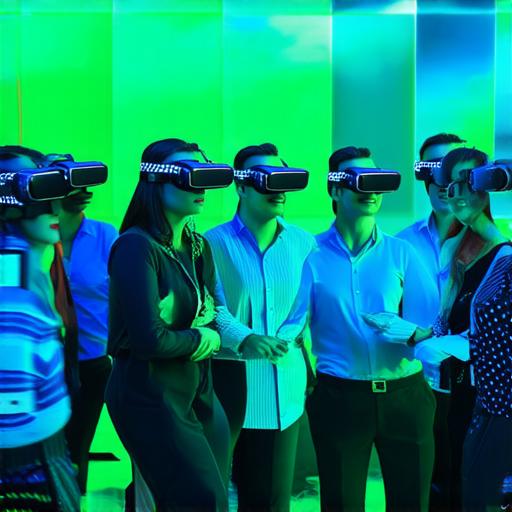Augmented Reality and Virtual Reality are two of the most exciting emerging technologies in the digital space. While they share some similarities, they are fundamentally different in their approach to immersive experiences. In this article, we will explore what AR and VR are, how they work, and what the implications might be for various industries.
Augmented Reality (AR)
Augmented Reality is a technology that enhances or “augments” the real world by adding digital elements such as images, animations, and sounds to it. AR allows users to interact with virtual objects in their physical environment, creating a more engaging experience than traditional 2D media.
The most common example of AR is Pokemon Go, an app that uses a smartphone’s camera to overlay digital creatures onto real-world surfaces.
AR works by using computer vision algorithms and sensors to track the user’s position in the real world. Once the user’s location is determined, the software can then add digital objects to the real world based on the user’s perspective. AR can be used for a wide range of applications, including education, marketing, entertainment, and healthcare.
Virtual Reality (VR)
Virtual Reality is a technology that creates a fully immersive experience by simulating a 3D environment in which users can interact with digital objects as if they were real. VR works by using sensors to track the user’s movements, and then creating a virtual world that responds to those movements.
The most common example of VR is Oculus Rift, a headset that allows users to enter a virtual world and interact with it using hand-held controllers.
VR can be used for a wide range of applications, including gaming, education, healthcare, and training. One of the key benefits of VR is that it can create a safe environment for users to practice skills or experience situations that might be dangerous or difficult in real life.
Implications of AR and VR

The implications of AR and VR are vast and varied. In terms of marketing, AR can be used to create interactive product displays that allow customers to see how products would look in their homes or on their bodies before they buy them. VR can be used to create virtual storefronts that allow customers to browse products as if they were physically in the store.
In education, AR can be used to enhance learning by adding interactive elements to textbooks and other educational materials. VR can be used to create virtual field trips to historical or scientific sites that might otherwise be inaccessible to students.
In healthcare, AR can be used to overlay digital information onto real-world objects, such as patient charts or medical equipment. This can improve efficiency and accuracy by providing doctors and nurses with the information they need at their fingertips. VR can be used for therapy, allowing patients to confront phobias or practice physical therapy in a safe and controlled environment.
In training, AR can be used to overlay digital instructions onto real-world objects, such as machinery or vehicles. This can improve safety and efficiency by providing workers with the information they need to perform their tasks correctly. VR can be used for simulated training exercises, allowing workers to practice skills in a safe and controlled environment.
Summary
In conclusion, Augmented Reality and Virtual Reality are two exciting technologies that offer vast potential for enhancing the way we interact with digital content. AR allows users to interact with virtual objects in their physical environment, while VR creates a fully immersive experience by simulating a 3D world. Both technologies have a wide range of applications across various industries, including marketing, education, healthcare, and training. As these technologies continue to evolve, we can expect to see even more exciting uses for AR and VR in the future.
